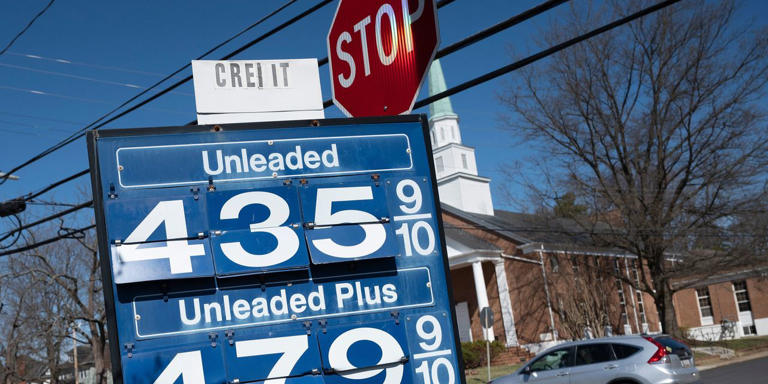By Jeffry Bartash
By Jeffry Bartash
ECONOMIC REPORT
The numbers: The Federal Reserve’s favorite inflation calculator rose a sharp 0.6% in February and kept the increase over the past year at a 40-year high, explaining why the central bank plans to move faster to raise U.S. interest rates.
The so-called personal consumption price index climbed to 6.4% in the 12 months ended in February, up from 6.2% in the prior month, the government said Thursday.
That’s the steepest increase since January 1982.
The better known consumer price index rose by an even higher 7.9% in the 12 months ended in February.
Key details: A narrower measure of inflation that omits volatile food and energy costs, known as the core PCE, rose by 0.4% in February.
The increase was the smallest in five months and matched the forecast of economists polled by the Wall Street Journal.
Still, the rise in the core rate in the past year rose to 5.4% from 5.2%, reflecting the largest gain since 1983.
The Fed views the PCE index — the core rate in particular — as the most accurate measure of U.S. inflation. It’s more comprehensive and takes into account when consumers substitute cheaper goods for more expensive ones — say ground beef for filet mignon or tofu for chicken.
Big picture: The Fed is signaling it might raise interest rates faster than it previously planned to try to contain the worst outbreak in inflation in decades.
Higher interest rates probably won’t do much to curtail inflation in the short run, but it could dampen demand for houses, autos and other big-ticket items. That would slow the economy and potentially tamp down the increase in prices.
Yet the Fed has to be careful of moving too quickly, some economists contend, or risk a potential recession. Most of the increase in inflation is tied to ongoing disruptions in global supply chains that emerged during the pandemic. Higher interest rates can’t solve that problem, they and Fed officials acknowledge.
In the meantime, most companies are raising prices and workers are asking for bigger pay raises. That could also add to inflation in the short run.
Looking ahead: “Prices are increasing too quickly and this report will not sway the Fed from its tightening path or its inflation outlook,” economists Chris Low and Will Compernolle said in a note to clients.
Read More From The PatriotAmerican
“Higher food and energy prices stemming from Russia’s invasion of Ukraine and renewed global supply chain impediments stemming from shutdowns in China figure to sustain inflation pressures for some time to come,” said chief economist Richard Moody of Regions Financial.
Market reaction: The Dow Jones Industrial Average and S&P 500 fell in Thursday trades.

